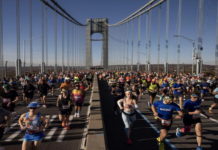The art of selecting the best line at the checkout is a great skill. Who among us doesn’t compare the advantages of the young mother with thirty items and the older lady with eight? Which one of these is going to be in price-check or coupon mode? Which of these will have you waiting while other lines pass by?
Self-checkout was a great idea for retailers with their razor-thin profit margins. Reduce wages, shorten queues, and “make shopping” easier, which is to say, make spending money “easier.” Instead of improving their bottom line, the stores are losing money.
A study found that retailers who heavily rely on this technology suffer losses twice as high as the rest of the industry. This loss is called shrinkage. It can be the difference between survival and solvency.
One study noted that “there seems to be an uneasy relationship” between the convenience of customers and their wider criminogenic effects. How about that as a word? It “reduces the effort and risk for offenders while increasing potential rewards. At the same time, it provides ready-made reasons for offending behaviors. Most importantly, when self-scanner systems are available, shrinkage rates increase dramatically. It is not clear whether shrinkage rates are caused by malicious intent or genuine errors. However, if these systems encourage law-abiding people to commit crimes, the social consequences could be significant.

The average loss is $120. An estimated 10% of scammers scanners are responsible for 67% of this. There are three ways of robbing a store. 1) Use a gun. 2) Go to a large city fill your arms up with things and walk out. 3) Chisel out the products from self-checkout.
While the majority of consumers are too shy to try one or two, a legion seems perfectly comfortable swindling the scanner at the checkout. In the wrestling match between technology and fallen human behavior, the fallen human behavior has the technology pinned on the canvas. Retailers are now crying, Uncle.
The dream of a profit bonanza is now a nightmare. Between the thefts committed on purpose and those that are accidental, as well as the need to pay for overseers who supervise customers who can’t work cash registers, the dream has become a disaster. The stores also pay top dollar for equipment that facilitates this theft.
Walmart has removed self-checkouts from certain stores to better profile their customers. Target has reduced the number of items it can scan, while Dollar General wants to hire more staff. You may have noticed that more self-checkout staff are working full-time in stores. They can help you find your way. Some stores have added more cameras that are right in your face as a way to deter theft.
One of my friends who worked as a District Attorney for one of the counties with the lowest crime rates in the nation told me about a job he had in the summer working at a Jewish concessionaire who ran a park near him in the Bronx. My friend was told to recruit as many of his classmates from his Catholic grammar schools as possible. The owner was angry when he brought his Jewish friend. He took him aside and told him, “I’ll give you friend a job but I said I wanted kids from Catholic school.” Listen, the kids that work for me are all thieves. When the Catholic school children go to confession, they have to pay me back.
Are there any retailers who are willing and able, to compensate for this theft? The retailers aren’t waiting for the end of the world, and the checkout lines in confessionals are not what they once were. For now, the widespread use of self-checkout is a failure. What’s next?




